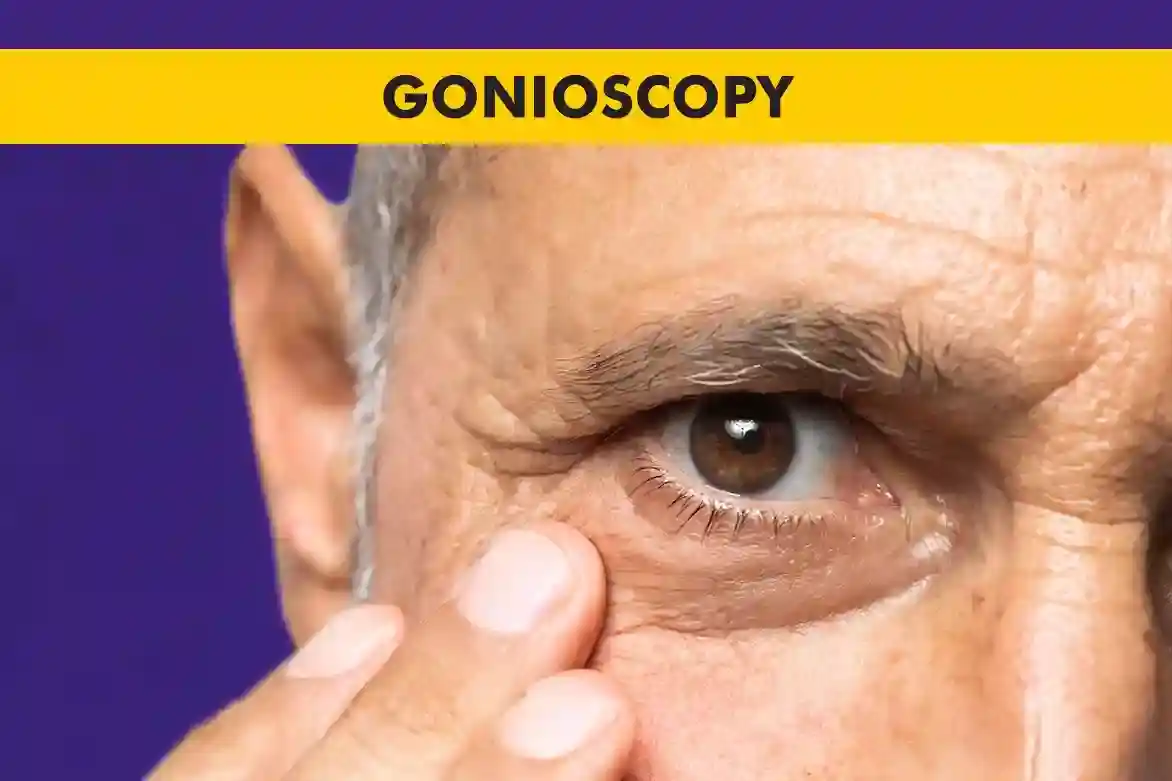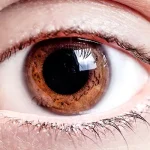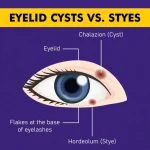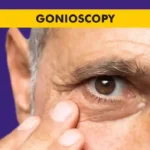Gonioscopy is a diagnostic procedure used to examine the drainage angle of the eye to check the signs of Glaucoma. The drainage angle is the area where the cornea (the clear front surface of the eye) and the iris (the colored part of the eye) meet. This procedure allows ophthalmologists to evaluate the angle and determine if there are any abnormalities or blockages that may be affecting the normal flow of fluid from the eye. Gonioscopy test is an essential tool in the diagnosis and management of glaucoma, a group of eye conditions that can damage the optic nerve and lead to vision loss.
During a gonioscopy procedure, a special lens is placed on the eye to provide a magnified view of the drainage angle. The ophthalmologist will use a slit lamp, a high-intensity light source, to illuminate the angle and assess its structures. The procedure is typically painless and only takes a few minutes to perform.
What Is Gonioscopy?
Before understanding what is gonioscopy, it is important to have some knowledge of the anatomy of the eye. The drainage angle is formed by the cornea, which is the clear tissue at the front of the eye, and the iris, the colored part of the eye. The angle is responsible for the outflow of aqueous humor, a fluid that nourishes the eye and maintains its shape. In a healthy eye, the fluid flows smoothly through the angle and drains into the bloodstream. However, in some cases, the angle may become narrow or blocked, leading to an increase in intraocular pressure. This increased pressure can damage the optic nerve and result in vision loss.
Gonioscopy examination allows ophthalmologists to visualize the drainage angle and assess its structures. By examining the angle, they can identify any abnormalities or blockages that may be present. This information is crucial in diagnosing and managing conditions such as glaucoma.
Gonioscopy Structures
During a gonioscopy test, the ophthalmologist will observe several structures within the drainage angle. These structures include the trabecular meshwork, Schlemm’s canal, and the iris root.
The trabecular meshwork is a network of tiny channels located at the base of the cornea. It acts as a filter, allowing aqueous humor to flow out of the eye while preventing the passage of larger particles.
Schlemm’s canal is a circular channel that runs around the circumference of the cornea. It collects the aqueous humor from the trabecular meshwork and transports it to the bloodstream.
The iris root is the part of the iris that attaches to the cornea. It plays a role in regulating the size of the drainage angle and controlling the flow of aqueous humor.
By examining these structures, ophthalmologists can assess the health and function of the drainage angle and make informed decisions regarding the treatment of any abnormalities or blockages.
Why Is Gonioscopy Necessary?
Gonioscopy procedure is necessary for several reasons. One of the primary reasons is the diagnosis and management of glaucoma. Glaucoma is a progressive eye condition that damages the optic nerve and can lead to vision loss if left untreated. By evaluating the drainage angle with gonioscopy, ophthalmologists can determine if the angle is open, narrow, or closed, which is important in determining the type and severity of glaucoma.
Gonioscopy is also necessary to assess the risk of angle-closure glaucoma. Angle-closure glaucoma occurs when the drainage angle becomes completely blocked, leading to a sudden increase in intraocular pressure. This condition requires immediate medical attention to prevent permanent vision loss. By performing gonioscopy test, ophthalmologists can identify individuals who are at risk for angle-closure glaucoma and take appropriate preventive measures.
In addition to glaucoma, gonioscopy may also be used to evaluate other conditions that affect the drainage angle, such as uveitis (inflammation of the uvea, the middle layer of the eye) or anterior segment dysgenesis (a group of developmental disorders affecting the front part of the eye).
Who Requires Gonioscopy?
Gonioscopy eye test may be recommended for individuals who are at risk for or have been diagnosed with glaucoma. This includes individuals with a family history of glaucoma, individuals with elevated intraocular pressure, and individuals with signs or symptoms of glaucoma such as blurred vision, eye pain, or halos around lights.
Gonioscopy may also be recommended for individuals with certain eye conditions that can affect the drainage angle, such as uveitis or anterior segment dysgenesis.
Ultimately, the decision to perform gonioscopy procedure will be made by an ophthalmologist after a thorough evaluation of the individual’s eye health and medical history.
Gonioscopy Test Procedure
The gonioscopy procedure is typically performed in an ophthalmologist’s office or eye clinic. The patient will be seated in a chair, and numbing eye drops may be applied to minimize any discomfort.
The ophthalmologist will then place a special lens called a gonioscopy lens on the patient’s eye. The lens allows the ophthalmologist to view the drainage angle under magnification. A slit lamp, which is a microscope with a high-intensity light source, is used to illuminate the angle.
During the examination, the ophthalmologist may ask the patient to look in different directions to ensure a thorough evaluation of the angle. The entire procedure usually takes only a few minutes to complete.
After the examination, the ophthalmologist will discuss the findings with the patient and recommend any necessary treatment or further testing.
Types of Gonioscopy
There are several different types of gonioscopy that may be used depending on the specific needs of the patient.
Direct gonioscopy involves placing a special contact lens directly on the patient’s eye. This allows for a high-resolution view of the drainage angle.
Indirect gonioscopy involves using a handheld lens and a slit lamp to view the angle. This technique provides a wider field of view but may have slightly lower resolution.
Ultrasound biomicroscopy (UBM) is a specialized type of gonioscopy that uses ultrasound waves to create detailed images of the drainage angle. This technique is particularly useful for visualizing structures that are difficult to see with other types of gonioscopy.
The specific type of gonioscopy procedure will depend on factors such as the patient’s anatomy, the ophthalmologist’s preferences, and the purpose of the examination.
Benefits of Gonioscopy
Gonioscopy eye test offers several benefits in the diagnosis and management of eye conditions:
- Early detection of glaucoma: By evaluating the drainage angle, ophthalmologists can identify early signs of glaucoma and initiate appropriate treatment to prevent vision loss.
- Customized treatment plans: Gonioscopy provides detailed information about the angle’s structures, allowing ophthalmologists to tailor treatment plans to the individual’s specific needs.
- Monitoring disease progression: Regular gonioscopy examinations can help monitor the progression of glaucoma or other conditions affecting the drainage angle.
- Evaluation of treatment effectiveness: Gonioscopy test can be used to assess the effectiveness of certain treatments, such as medications or surgical interventions, in improving the function of the drainage angle.
- Prevention of complications: By identifying individuals at risk for angle-closure glaucoma, gonioscopy can help prevent complications and vision loss associated with this condition.
Gonioscopy Lens Types
There are different types of gonioscopy lenses used to perform the procedure. These lenses are designed to provide a clear view of the drainage angle and its structures. Some common types of gonioscopy lenses include:
Goldmann lens: This lens is commonly used for direct gonioscopy. It is a small, concave lens that is placed directly on the cornea.
Zeiss lens: This lens is also used for direct gonioscopy. It has a similar design to the Goldmann lens but may provide a slightly different view of the angle.
Sussman lens: This lens is used for indirect gonioscopy. It is a handheld lens that is placed in front of the patient’s eye while using a slit lamp.
Koeppe lens: This lens is used for indirect gonioscopy. It has a similar design to the Sussman lens but may provide a different angle of view.
Conclusion
Gonioscopy is a valuable tool in the diagnosis and management of eye conditions, particularly glaucoma. By evaluating the drainage angle, ophthalmologists can assess its structures, identify any abnormalities or blockages, and make informed decisions regarding treatment. If you have concerns about your eye health or have been diagnosed with glaucoma, talk to your ophthalmologist about whether gonioscopy is necessary for your specific case. Regular eye examinations and early detection are key to maintaining good vision and preventing complications.
FAQs
What is a gonioscopy used for?
Gonioscopy is used to examine and assess the drainage angle of the eye to diagnose conditions like glaucoma.
What are the 4 structures of gonioscopy?
The 4 structures visualized during gonioscopy are the scleral spur, trabecular meshwork, Schwalbe’s line, and the angle recess.
What is the difference between gonioscopy and tonometry?
Gonioscopy examines the drainage angle of the eye to assess glaucoma risk, while tonometry measures intraocular pressure (IOP).
What are the two types of gonioscopy?
The two types of gonioscopy are direct gonioscopy and indirect gonioscopy.
What is the use of the gonioscopy test?
Gonioscopy helps in evaluating the angle of the eye’s anterior chamber to diagnose and manage glaucoma and other conditions affecting the drainage of aqueous humor.
What are the risks of gonioscopy?
Risks include potential discomfort, corneal abrasion (rare), and very rarely, an acute angle closure attack in susceptible individuals.





